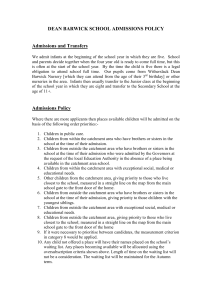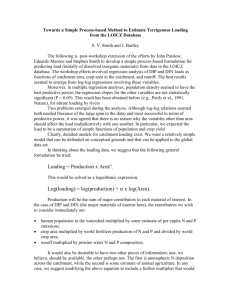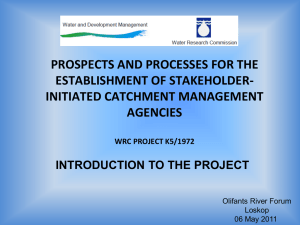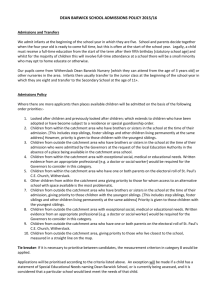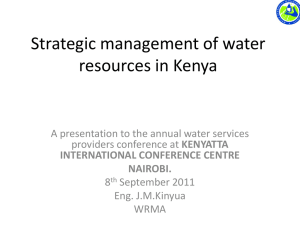Joshua Tan They say 2/3 of our land is used for these catchment
advertisement
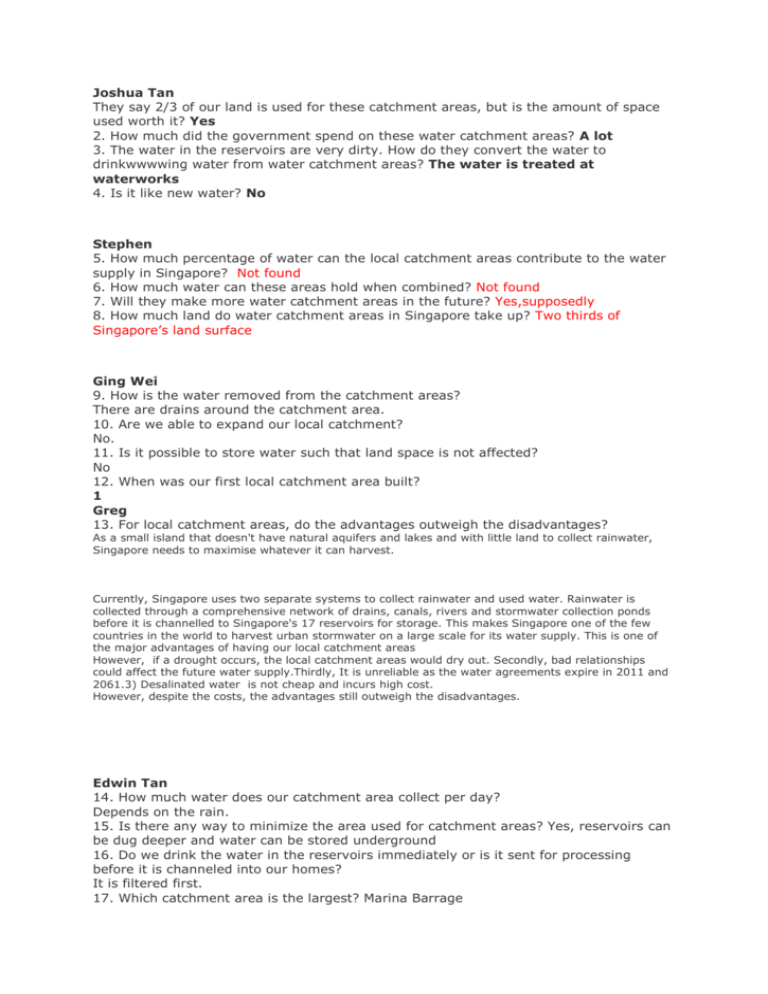
Joshua Tan They say 2/3 of our land is used for these catchment areas, but is the amount of space used worth it? Yes 2. How much did the government spend on these water catchment areas? A lot 3. The water in the reservoirs are very dirty. How do they convert the water to drinkwwwwing water from water catchment areas? The water is treated at waterworks 4. Is it like new water? No Stephen 5. How much percentage of water can the local catchment areas contribute to the water supply in Singapore? Not found 6. How much water can these areas hold when combined? Not found 7. Will they make more water catchment areas in the future? Yes,supposedly 8. How much land do water catchment areas in Singapore take up? Two thirds of Singapore’s land surface Ging Wei 9. How is the water removed from the catchment areas? There are drains around the catchment area. 10. Are we able to expand our local catchment? No. 11. Is it possible to store water such that land space is not affected? No 12. When was our first local catchment area built? 1 Greg 13. For local catchment areas, do the advantages outweigh the disadvantages? As a small island that doesn't have natural aquifers and lakes and with little land to collect rainwater, Singapore needs to maximise whatever it can harvest. Currently, Singapore uses two separate systems to collect rainwater and used water. Rainwater is collected through a comprehensive network of drains, canals, rivers and stormwater collection ponds before it is channelled to Singapore's 17 reservoirs for storage. This makes Singapore one of the few countries in the world to harvest urban stormwater on a large scale for its water supply. This is one of the major advantages of having our local catchment areas However, if a drought occurs, the local catchment areas would dry out. Secondly, bad relationships could affect the future water supply.Thirdly, It is unreliable as the water agreements expire in 2011 and 2061.3) Desalinated water is not cheap and incurs high cost. However, despite the costs, the advantages still outweigh the disadvantages. Edwin Tan 14. How much water does our catchment area collect per day? Depends on the rain. 15. Is there any way to minimize the area used for catchment areas? Yes, reservoirs can be dug deeper and water can be stored underground 16. Do we drink the water in the reservoirs immediately or is it sent for processing before it is channeled into our homes? It is filtered first. 17. Which catchment area is the largest? Marina Barrage Joshua Wong 18. Were any catchment areas man-made? We can consider some of the catchment areas man made. This is justified by the PUB when they planned to increase the catchment areas from ½ to 2/3. So some of the catchment areas are man made. 19. How do they treat this water to make sure it is safe for drinking? The water that is collected will be collected in the water treatment plants where water is filtrated by filtration pumps in the water treatment and will be pumped out throughout the city. 20. How does the process of water purifying go, after the rainwater is catched in resevoirs? Water will be channelled down rivers or streams to the water treatment plants where filtration takes place because of the filtration pumps located there and then it is pumped out after it is purified and safe for drinking. 21. What is the total size of our catchment areas? Our size of the total catchment areas is about 476km^2 which is also 2/3 of our total land area (714.3km^2)

